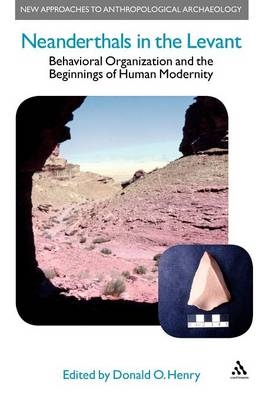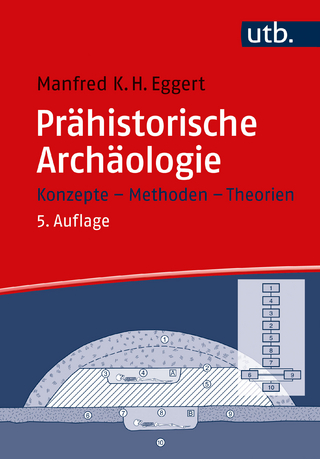
Neanderthals in the Levant
Leicester University Press (Verlag)
978-0-8264-5803-2 (ISBN)
- Titel ist leider vergriffen;
keine Neuauflage - Artikel merken
The volume traces the controversy that revolves around the bio-cultural relationships of Archaic (Neanderthal) and Modern humans at global and regional, Levantine scales. The focus of the book is on understanding the degree to which the behavioral organization of Archaic groups differed from Moderns. To this end, a case study is presented for a 44-70,000 year old, Middle Paleolithic occupation of a Jordanian rockshelter. The research, centering on the spatial analysis of artifacts, hearths and related data, reveals how the Archaic occupants of the shelter structured their activities and placed certain conceptual labels on different parts of the site. The structure of Tor Faraj is compared to site structures defined for modern foragers, in both ethnographic and archaeological contexts, to measure any differences in behavioral organization. The comparisons show very similar structures for Tor Faraj and its modern cohorts. The implications of this finding challenge prevailing views in the emergence of modern human controversy in which Archaic groups are thought to have had inferior cognition and less complex behavioral-social organization than modern foragers. And, it is generally thought that such behaviors only emerged after the appearance of the Upper Paleolithic, dated some 10-20,000 years later than the occupation of Tor Faraj.
Donald O. Henry is Professor Emeritus of Anthropology at the University of Tulsa, USA. He is the author of several books and numerous articles covering his over 25 years of archaeological research on prehistoric human ecology in the Near East.
List of Figures
List of Tables
List of Contributors
Acknowledgements
Introduction
1. The Emergence of Modern Humans: Issues and Debates (Donald O. Henry)
2. The Levant and the Modern Human Debate (Donald O. Henry)
Case Study
3. A Case Study from Southern Jordan: Tor Faraj (Donald O. Henry)
4. Human Behavior and the Stone Tools from Tor Faraj (Donald O. Henry)
5. Small Lithic Debris Analysis (Teresa L. Armagan)
6. Into the Mind of the Maker: Refitting Study and Technological Reconstructions (Yu. E. Demidenko and V. I. Usik)
7. Middle Paleolithic Plant Exploitation: The Microbotanical Evidence (Arlene Miller Rosen)
8. Formation Processes and Paleosurface Identification (Harold J. Hietala)
9. Site Structure and Material Patterning in Space on the Tor Faraj Living Floors (Harold J. Hietala)
Summary
10. Behavioral Organization at Tor Faraj (Donald O. Henry)
Appendix A: Alphabetical Listing of Attribute Definitions Used for the Tor Faraj Small Lithic Debris Study (Teresa L. Armagan)
Appendix B: Small Lithic Debris Analysis Results Tables
Appendix C: Cross-Cultural Data for Hearths in Rockshelters (Donald O. Henry)
Appendix D: Analysis of Sediments for Zinc and Phosphate Ions (Thomas M. Harris)
References
Index
| Reihe/Serie | New Approaches to Anthropological Archaeology |
|---|---|
| Zusatzinfo | 120 bw illus |
| Verlagsort | London |
| Sprache | englisch |
| Maße | 210 x 297 mm |
| Gewicht | 990 g |
| Themenwelt | Geisteswissenschaften ► Archäologie |
| Geschichte ► Allgemeine Geschichte ► Vor- und Frühgeschichte | |
| Naturwissenschaften ► Biologie ► Humanbiologie | |
| ISBN-10 | 0-8264-5803-3 / 0826458033 |
| ISBN-13 | 978-0-8264-5803-2 / 9780826458032 |
| Zustand | Neuware |
| Informationen gemäß Produktsicherheitsverordnung (GPSR) | |
| Haben Sie eine Frage zum Produkt? |
aus dem Bereich


